Table of contents
- Portrait: Gunter Scherubl The passionate two-stroke fan Gunter Scherubl
- Not without style
- Overall appearance of the builder plus Benelli looked like advertising
- Mainly two-stroke
- The Nippon twin simply offers greater tuning potential
- Gunter Scherubl does not want to produce small series
- Kent Andersson was interested
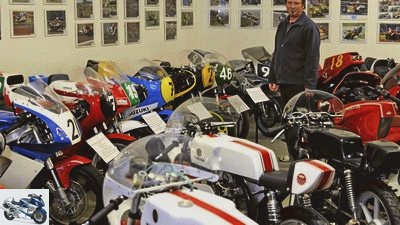
Siemer
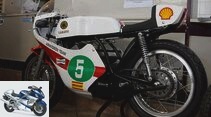
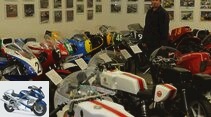

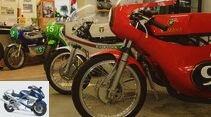
15th pictures

Siemer
1/15
The two-stroke fan Gunter Scheruebl transforms old series motorcycles into racing replicas.
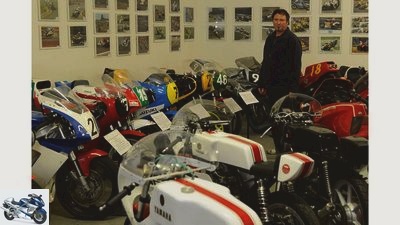
Siemer
2/15
Scherubl can definitely be proud of his collection.
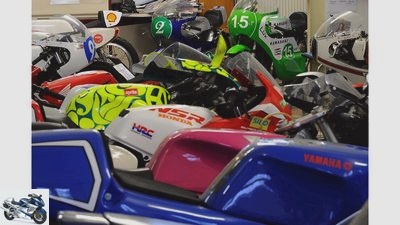
Siemer
3/15
His small museum is wonderfully cramped.
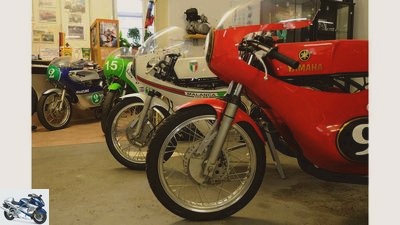
Siemer
4/15
Gunter Scherubl did a great job.
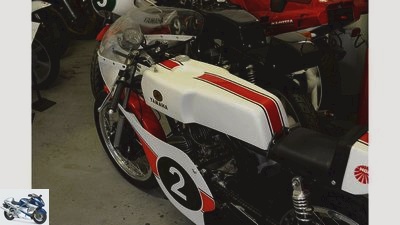
Siemer
5/15
Another Yamaha conversion.
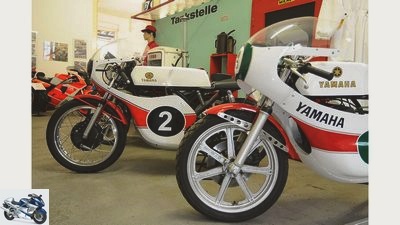
Siemer
6/15
Gunter Scherubl can sometimes not believe what is accumulating.
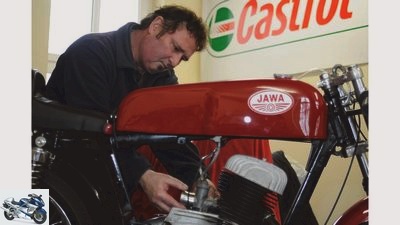
Siemer
7/15
The tinkerer at work.
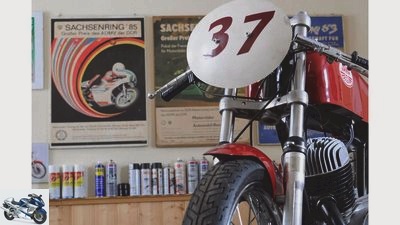
Siemer
8/15
Scherubl now owns so many copies that he can run a small museum.
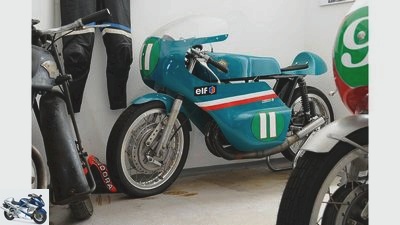
Siemer
9/15
The passion for collecting began with this slim Benelli replica.
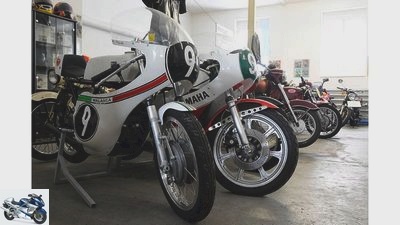
Siemer
10/15
The collection of racing replicas is clearly impressive.
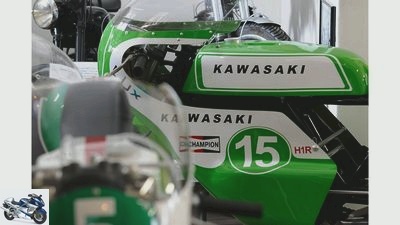
Siemer
11/15
There is also a great Scherubl double from the famous Kawasaki Production Racer H1R.
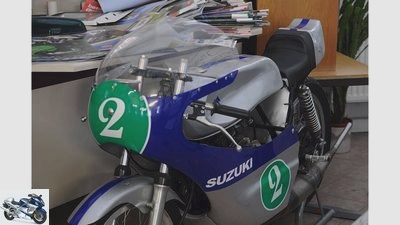
Siemer
12/15
A converted Suzuki.
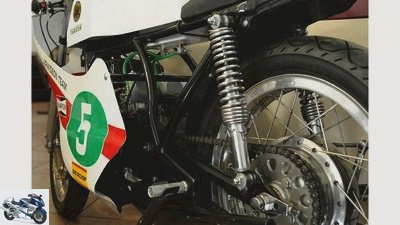
Siemer
13/15
Especially in the close-ups you can clearly see how much effort Scherubl puts into his splendid specimens.
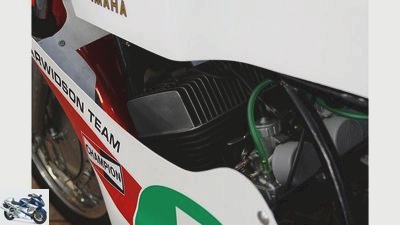
Siemer
14/15
Here you can see an old Yamaha.
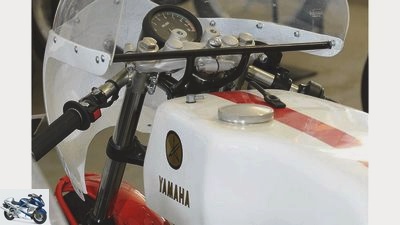
Siemer
15/15
Many people are familiar with this tachometer, the fork bridge is also standard, but the fairing brackets are welded on at a later date.
Sports & scene
Scene: Portrait of two-stroke fan Scherubl
Portrait: Gunter Scherubl
The passionate two-stroke fan Gunter Scherubl
Content of
A passionate two-stroke fan immerses old series motorcycles in a fountain of youth. They then spend the rest of their days as beautiful racing replicas.
Fred Siemer
05/23/2013
Anyone who penetrates the Saxon heartland near Zwickau, Chemnitz or Zschopau will like to hear the sentence after the third or fourth Radeberger that a caged naked Saxon, if he can get hold of a needle and thread, is guaranteed to leave jail in a suit. The Swabians probably tell each other something similar about the spritzer. The fact remains that the lack of agricultural riches here as there resulted in increased inventiveness.
Buy complete article
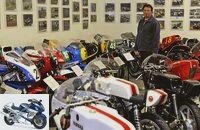
Portrait: Gunter Scherubl
The passionate two-stroke fan Gunter Scherubl
4 pages) as PDF
€ 2.00
Buy now
This penchant for tinkering and tinkering has not only permeated glamorous companies – Daimler and DKW may suffice as proof – but has also written the strangest stories to this day. That of the master electrical mechanic Gunter Scherubl, for example, lives in Lichtenstein near Zwickau. He already has a suit and is also walking around freely. That’s why he builds two-stroke racers during his free time. Yamaha, Benelli, Malanca – in Scherubl’s workshop it is like in the paddock of a well-staffed 125 or 250 race of the 1970s.
Not without style

Siemer
His small museum is wonderfully cramped. Everything started so clearly, with a slim Benelli replica.
At that time, numerous less complex, but also less sensitive production racers gathered behind the rare factory racers on the front row. If you liked, you could often discover a certain closeness to series production, and that’s exactly where Gunter Scherubl ties in. When he opened up to veteran sport almost 15 years ago, he wanted to have fun. After training, check the candles, then turn on the grill and do a few happy laps the next day.
The latter is not without style, of course, and that’s why his self-built Benelli racer looked just like the ones that filled Italy’s national starting fields in the 1970s. The air-cooled two-stroke twin hangs in the series frame, slim racing tank and a tight hump on top, two pithy exhaust pipes underneath, tight full fairing around it. All in all, it weighs a wonderful 104 kilograms.
Overall appearance of the builder plus Benelli looked like advertising
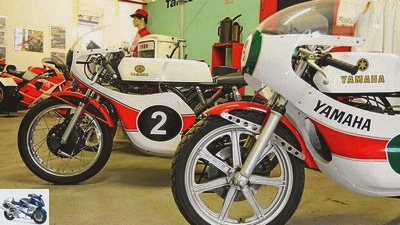
Siemer
Outside Yamaha Production Racer, behind the fairing perfectly prepared series technology.
And desirably beautiful. Other veteran friends also said this and also noticed that the Sachsen-Benelli always ran cleanly. Which shouldn’t come as a surprise, because Gunter Scherubl had just finished his career as a mechanic for his two fast sons, Rene and Alexander, and his own racing on a 50cc Simson had also left a deep knowledge of fixed two-stroke engines. In short: The overall appearance of the builder plus Benelli looked like advertising; before he knew it, his colleagues came and wanted a practical hit. Gunter Scherubl agreed. He just enjoys tinkering and building, and the inquiries justified further visits to Italian parts markets.
There were enough recyclable 125cc and 250cc Benellis there, and high-shoulder rims or racing brakes could still be found on these occasions. Chasing after suitable tanks or racing humps was, however, very tedious in the long run – both have been newly created for years in a small Italian craft business. In addition, there was still a lot to discover on the Apennines that had little to do with replicas, but served to build up a fine collection.
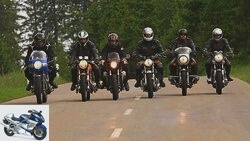
Tourer
On the move: classics of the 70s
Europe wheel
read more
Mainly two-stroke
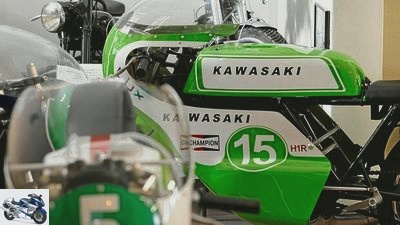
Siemer
There is also a great Scherubl double from the famous Kawasaki Production Racer H1R-
Mainly two-stroke, that’s their motto, and that’s hardly surprising. But with a Peugeot from 1939 or the tourist Suzuki GT 750, for example, it goes far beyond its sporting use. MZ is by no means absent, although Scherubl himself takes a rather divided position on the Zschopau standard motorcycle. It was practically prescribed, back in the GDR, and that’s why he proudly drove a Jawa with a 350 twin-cylinder. Two-stroke, of course. He later got hold of a 500cc Honda Four for a lot of money. Four-stroke, well, but a real sensation around Zwickau and ideally suited to head for all accessible Grand Prix courses with your buddies.
As a ten-year-old Gunter Scherubl made the pilgrimage to the Sachsenring. By bicycle. Whether pilots or motorcycles – the names of those years still accompany him today. The usual suspects are joined by Heinz Rosner, who bravely fought the rest of the world on MZ in the 125 to 350 cm³ classes, as well as Rodney Gould, Kel Carruthers and Kent Andersson, all on the move on fast two-stroke twins.
The Nippon twin simply offers greater tuning potential
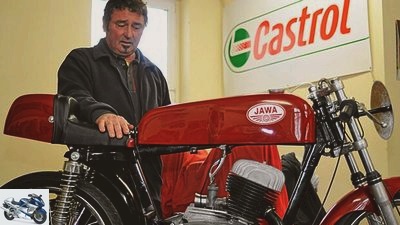
Siemer
Other people collect autograph postcards for their idols, Gunter Scherubl the matching motorcycles.
They came from Yamaha, so Gunter Scherubl should have known what would happen to him sooner or later with his Benelli racer: They shot past him on the left and right. Not only real production racers, but also manufactured series motorcycles – the Nippon twin simply offers greater tuning potential. In the 250cc series, the Benelli-2C also struggles with a displacement handicap of almost 20 cm³. In short: Obeying the power of the factual, Gunter Scherubl has been building Yamahas since 2003.
The series frame loses all unnecessary brackets, tapered roller bearings are placed in the steering head, brass bushings take up the swing arm axle, brackets for cladding, tank and hump are welded on. Most customers are satisfied with the standard brakes, depending on the desired appearance, the drums of the AS / DS / R5 series or the front disc brakes of the RD series. It is very rare to find a nice double duplex brake from a TR or TD, rather Italian noble goods from Grimeca or Ceriani. Scherubl and its customers deal with the subject of suspension elements in a similarly pragmatic manner; here, too, the renovated standard forks and commercially available suspension struts are usually sufficient.
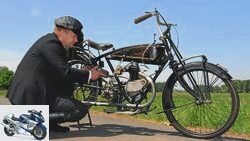
classic
HEROS 200 restoration
Full tank, new oil and freshly lubricated valves
read more

Used purchase
Moped restoration: Kreidler MF2
Project Moped: The Kreidler MF2 becomes the dream of two generations
read more
Gunter Scherubl does not want to produce small series
The engine construction is a bit more complex, because not only Gunter Scherubl doesn’t like to follow suit. So it lets in real smoke with changed control times, processed channels and higher compression, the racing pears are precisely shaped for the respective cubic capacity, an electronic ignition ensures precision and saves the battery. Scherubl treats the 250 and 350 with a 30 mm round slide carburettor from Mikuni, while the 125 has a maximum of 26. The oil pump of the separate lubrication is removed, instead a mixture of 1:20 to 1:25 is put into the tank. Some find a dry clutch chic. In the end, the balance sheet looks like this: The 250 replica from Saxony weighs barely more than the 100 kilos lightweight Production Racer TD from 1971 and has a total of 43 HP less. On the other hand, it is not that bitchy and not so valuable and has a much shorter first gear – good on most of the courses that are usual at today’s classical events.
Gunter Scherubl does not want to produce small series. The man in his mid-fifties is thinking about the end of his manufacture. He has recreated ten Benellis and many more Yamahas. Because their engine is similar to that of the Yamaha, five Malanca 125-based racers were created, graceful beauties, one of which found its way into Scherubl’s collection. Otello Buscherini is on the fairing, a memory of the factory driver who was killed in an accident in 1976 and who delivered gorgeous performances both at the Sachsenring and in the Czech Republic. There’s a 250cc Suzuki that is somewhat reminiscent of Barry Sheene’s first 500cc of the brand. Next to it is a Kawasaki that Paul Smart might recognize.
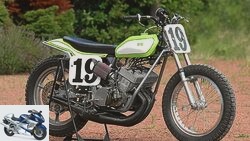
Super athlete
The two-stroke experiment
Kawasaki 750 H2R dirt tracker
read more
Kent Andersson was interested

Siemer
Gunter Scherubl can sometimes not believe what is accumulating just because you like sporty two-stroke engines.
Other people collect autograph postcards from their idols, Gunter Scherubl the matching motorcycles. A friend – the veteran racer Thomas Korn from Munich – gave the occasion to pay homage to a very special idol. The fast man already had three Scherubl racers, but found his 125cc Benelli a bit too lame. Gunter Scherubl made the pilgrimage in Schotten to Kent Andersson’s box, the 1973 and 1974 world champion, took a closer look at his winning machine and took photos. This did not go unnoticed by the champion, people started talking, Gunter uncovered his replica plans, Kent showed interest and was curious about the result. See you next year then.
Kent Andersson never saw Scherubl’s replicas. A few days after the encounter, he died suddenly and surprisingly in August 2006, and maybe that’s why there is a lot of love in the two eight-liter Yamahas. The air-cooled model is based entirely on the Production Racer TA, while the water-cooled model is based more on Andersson’s WM-Twin YZ 623.
A water-cooled two-cylinder from the Malanca corner provides propulsion, but it is really sharp. A Yamaha racing brake decelerates at the front, a DS drum at the rear. The wider swing arm required a modified swing arm mount, Grimeca rims increase the racing spirit. In any case, it is not the material if Thomas Korn is overtaken today. Incidentally, the Bavarian has already upgraded Scherubl Yamahas back to street legal, and Gunter Scherubl has recently been going strange ways: on his workbench is a Jawa that has never been seen before. The rare single-cylinder sports engine from 1954 with 350 cm³ was mostly used as a drive for motocrossers. Scherubl can’t do anything with that. But what about Saxony, needle and thread? Exactly, he got himself a series frame and built a street racer.
Related articles
-
Scene: Portrait of Ferry Brouwer
Siemer Sports & scene Scene: Portrait of Ferry Brouwer Scene: Portrait of Ferry Brouwer To ask! Content of He was a mechanic for greats like Phil Read…
-
Scene: Retro Guzzi in a company portrait
Thomas Schmieder counselor traffic & business Scene: Retro Guzzi in a company portrait Scene: Retro Guzzi in a company portrait Passione, Amore &…
-
Fred Siemer 16 pictures Fred Siemer 1/16 Norbert Schuller knows the sensitive Konig four-cylinder like no other. Fred Siemer 2/16 Every handle has been…
-
Scene: People and their motorcycles
fact motorcycles Scene: People and their motorcycles Scene: People and their motorcycles In the beginning it was the curve Regardless of whether it’s a…
-
Scene – workshop portrait Zweirad Wiebusch
Thomas Schmieder 10 pictures Thomas Schmieder 1/10 Picture gallery: Workshop portrait Zweirad Wiebusch. Thomas Schmieder 2/10 Marco Wiebusch is all about…
-
Portrait of racing machine collector Wolfhart Krischke
Fred Siemer 14th pictures Fred Siemer 1/14 Wolfhart Krischke’s racing machine collection. Fred Siemer 2/14 King with BMW gearbox and cardan. Fred Siemer…
-
motorcycles Company portrait boxer Company portrait boxer Training camp From a tuning company to an independent design forge, the Boxer company has…
-
Company portrait of Continental
Graphics: Continental 18th pictures Bilski 1/18 Concentrated Conti input for MOTORRAD (from right): Motorcycle World Sales Director Bettina Lehmann,…
-
Honda CL 350 custom bike: two-stroke engine with 100 hp
Jason Stillgebouer 11 pictures Jason Stillgebouer 1/11 Drew screwed the frame of a Honda CL 350, a two-stroke from Yamaha. Jason Stillgebouer 2/11 The…
-
Scene: motorcycle legends and their situation today
MZ Sports & scene Scene: motorcycle legends and their situation today Scene: motorcycle legends and their situation today What are actually doing……